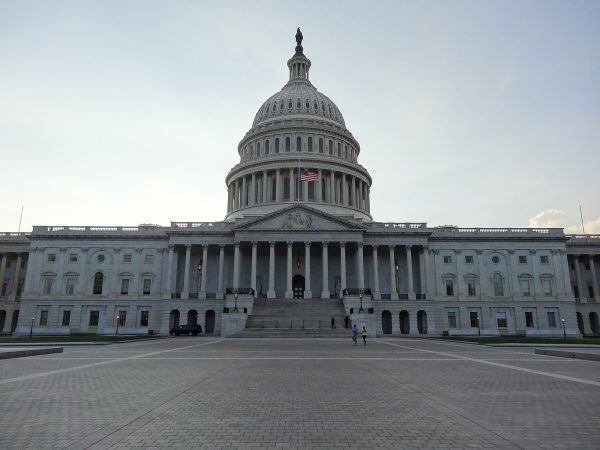Effectiveness of Printing Costs Questioned
Campus wide printing usage prompts questions about allocation of fees and how to encourage sustainable behaviors for students.
Currently, the college provides 600 sheets of paper, valued by the college at 42 dollars, per semester for students to print. This number reflects years of comparisons to similar institutions along with Dickinson College student printing trends.
The 600 page limit refers to the number of images students can print. This may not equate to 600 pages, depending on student printing behaviors. Options of duplex printing and double-sided printing allow students to print less but still receive the regular printing charge.
In previous years, individual departments on campus have purchased paper to fulfill their own usages. However, this system limited users to print from their designated departments. According to Margaret Stafford, director of planning and budget, the current printing system is more functional because any member of the college can print from any printer with their Dickinson ID card.
The Print Center now serves as the central purchaser of paper, and individual departments are no longer responsible for this expense. Stafford said that central purchasing allows for cheaper costs with bulk orders and ensures that the paper is recyclable and has a Forest Stewardship Council (FSC) certification. FSC certifies that products are extracted from sustainable forests.
Although 600 pages of paper reflects a mix of trends, most students do not use all assigned pages per semester. According to Andrew Connell, director of User Services, of the 97 percent of students that printed 600 pages or less in the Fall 2019 semester, 56 percent of students printed less than 200 pages. Additionally, 32 percent of students printed less than 100 pages the same semester.
Concerns of unsustainable printing habits are not due to physical paper usage. However, concerns arise with the set-up of printing balances. For each student, the cost of printing is included within their tuition, and there is no set amount for this expense. Regardless of printing habits, students pay for the 600-page printing fee. According to Lindsey Lyons, assistant director of the Center for Sustainability Education (CSE), there are challenges towards encouraging students to participate in sustainable printing behaviors with this system. “The challenge with the current way [of] printing […] is it’s very anonymous, there’s no incentives for you to use less,” she said.
The college does not provide printing bills to students, faculty, or staff, so they cannot see how their printing usage compares to others on campus. Rather, users have access on the printing website, PaperCut, to see their recent print jobs and their projected environmental impact (such as carbon emitted, or number of trees consumed.” “I would advocate for utility transparency—where people know who’s using what within departments’ budgets because our other college spending works that way,” Lyons said.
Faculty do receive more incentives to print less since their expense derives from a fixed budget. “[L]ess printing allows more budget monies to be used for programming and other needs,” Stafford said but reiterated that students are incentivized to print based on the 600-page limitation.
Part of an effort to encourage more sustainable printing behaviors involve financial incentives to students. According to Lyons, the money left over in the semester from student printing can be exchanged as a credit for other uses at the college. “Even if it’s just giving that freedom to spend the money in the bookstore instead of on printing, I think that would motivate some students to print more effectively,” she said. Additionally, the college would earn the same amount of revenue, since that money for printing reserved in tuition would be circulated around campus facilities. Lyons also noted that more sustainable printing behaviors would help the college save money on future paper/printing services.
Students shared mixed opinions on the system of charging for printing at the college. Freya Whittaker ’21 agreed with the printing costs within tuition and said the college should not charge for individual paper. “With that said, I do think […] finding another creative way to limit paper usage would be advisable and consistent with Dickinson’s commitment to sustainability,” she said. Claire Jeantheau ’21 recognized that printing is only a small part of sources of waste generated by the college. “I think a more effective way to promote sustainability would be to allow students to view online readings […] instead of requesting that they print,” she said.
Through PaperCut, overall paper waste has declined at the college. According to Connell, 42,600 sheets of paper were saved due to unclaimed print jobs—roughly 5.1 trees.
Although paper waste attributes to a portion of total college waste, Lyons said that the importance lies within encouraging individual behavior change to practice sustainability. “It’s the idea of thinking about using less—that has big benefits,” she said.




